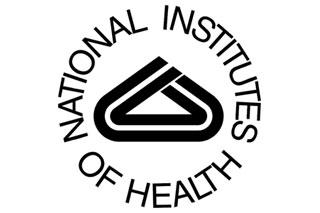 National Institutes of Health researchers have uncovered a key factor in understanding the elevated cancer risk associated with gene therapy. They conducted research on mice with a rare disease similar to one in humans, hoping their findings may eventually help improve gene therapy for humans. Researchers at the National Human Genome Research Institute (NHGRI), part of NIH, published their research in the online issue of the Journal of Clinical Investigation.
National Institutes of Health researchers have uncovered a key factor in understanding the elevated cancer risk associated with gene therapy. They conducted research on mice with a rare disease similar to one in humans, hoping their findings may eventually help improve gene therapy for humans. Researchers at the National Human Genome Research Institute (NHGRI), part of NIH, published their research in the online issue of the Journal of Clinical Investigation. “Effective and safe gene therapies have the potential to dramatically reverse diseases that are life-threatening for affected children,” said NHGRI Scientific Director Dan Kastner, M.D., Ph.D. “This study is an important step in developing gene therapies that can be safely used to benefit patients.”
Toxic side effects actually are rarely observed by researchers who have designed gene therapies using an adeno-associated virus (AAV) as a vector to deliver the corrected gene to a specific point in the cell’s DNA. AAVs are small viruses that infect humans but do not cause disease. A vector is a DNA molecule of AAV used as a vehicle to carry corrected genetic material into a cell. AAV viruses are uniquely suited for gene therapy applications.
But one prior study did find an association between AAV and the occurrence of liver cancer. The present research addresses this problem in gene therapy for an inherited disease in children called methylmalonic acidemia, or MMA.
For 10 years, NHGRI researchers have worked toward a gene therapy to treat MMA. The condition affects as many as 1 in 67,000 children born in the United States. Affected children are unable to properly metabolize certain amino acids consumed in their diet, which can damage a number of organs and lead to kidney failure. MMA patients also suffer from severe metabolic instability, failure to thrive, intellectual and physical disabilities, pancreatitis, anemia, seizures, vision loss and strokes. The most common therapy is a restrictive diet, but doctors must resort to dialysis or kidney or liver transplants when the disease progresses.
In prior MMA gene therapy studies, researchers showed that mice bred to develop the condition could be restored to health by AAV gene therapy injection shortly after birth. The mice in the study survived into adulthood and were free from the effects of MMA.
“The corrected gene delivered by AAV is the most effective therapy we have developed so far to treat MMA,” said Charles Venditti, M.D., Ph.D., senior author and investigator in NHGRI’s Genetic and Molecular Biology Branch. “However, we have identified an important safety parameter related to the AAV gene therapy in our mouse models that is critical to understand before we move to human patient trials.”
Now, in a long-term follow-up of the treated mice — after mice reached about two years of age — the researchers documented a 50-70 percent higher occurrence of liver cancer in AAV-treated mice compared with a 10 percent liver cancer rate in untreated mice. Dr. Venditti’s team determined that the AAV vector triggered the cancer.
The research team performed additional experiments to detect where in the mouse genome the AAV vector delivered the corrected gene and how that related to any cancer development. In many mice that developed liver cancer, the AAV vector targeted a region of the mouse genome called Rian, near a gene called Mir341 that codes for a microRNA molecule. MicroRNAs are small, non-coding RNA molecules involved in the regulation of gene expression. When the AAV was inserted near Mir341, the vector caused elevated expression of the gene, which the researchers believe contributed to the occurrence of liver cancer in the mice. The authors note that Mir341 is found in the mouse genome, however, it is not present in humans.
When the researchers used an alternate AAV vector to deliver the corrected gene in a study of just 10 mice, that vector did not insert where it would elevate the expression of nearby genes and it did not cause liver cancer. The researchers found that this modification was a safer gene therapy.
“These studies will help us move forward to develop safer gene therapy for methylmalonic acidemia,” said Randy Chandler, Ph.D., lead author and NHGRI staff scientist. “Most of the AAV integrations that caused liver cancer landed in a gene that is not found in the human genome, which suggests that the cancers we observed after AAV gene therapy may have been a mouse-specific phenomenon. However, these studies do convincingly demonstrate that AAV can be a cancer-causing agent, which argues for further studies.”
The researchers also observed that lower doses of AAV resulted in reduced rates of liver cancer compared to a control group of mice. Their data showed that the rate of cancer dropped in proportion to the dose of the AAV.
Dr. Venditti hopes that methodologies described in his team’s research will be used by others to study the toxicity of AAV vectors in their preclinical trials.
Source: NIH
Filed Under: Drug Discovery




